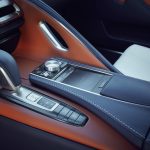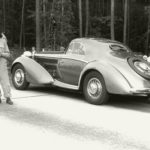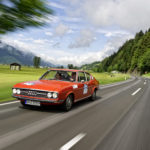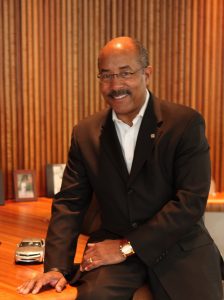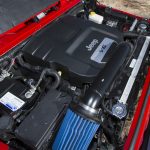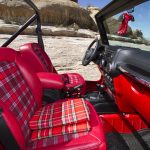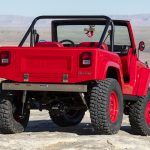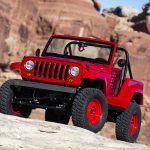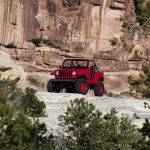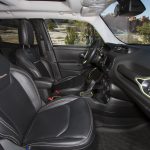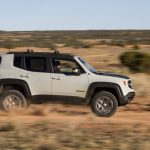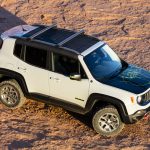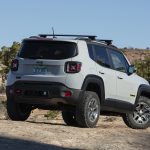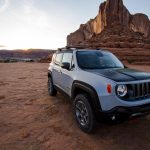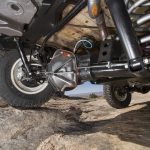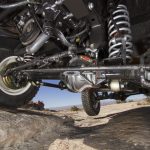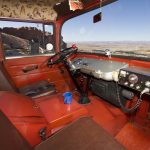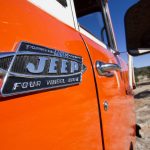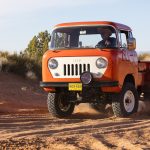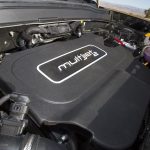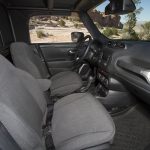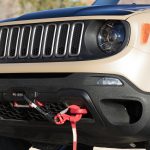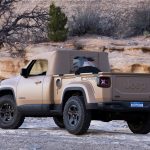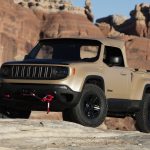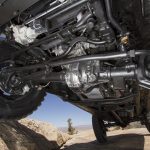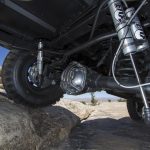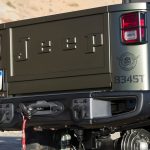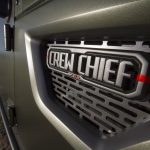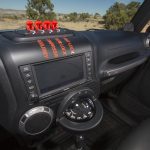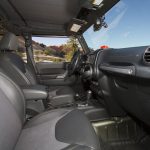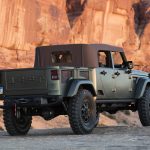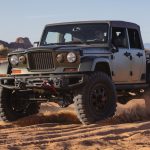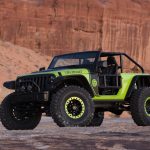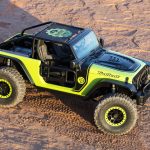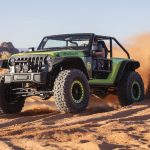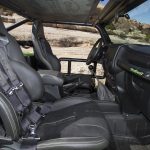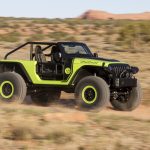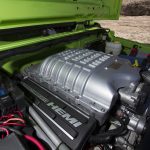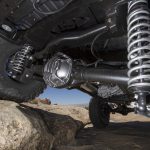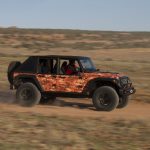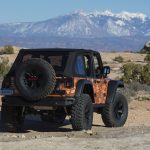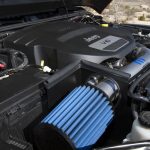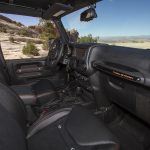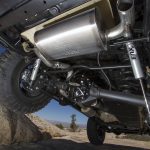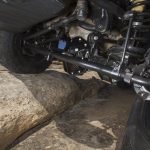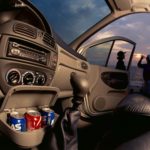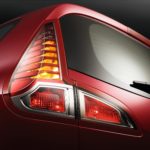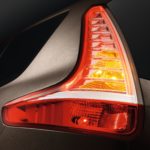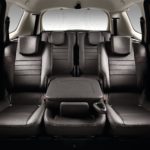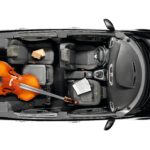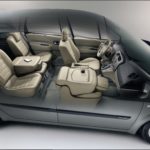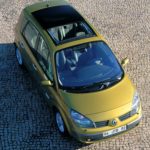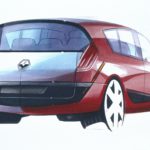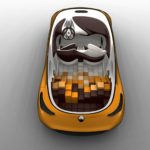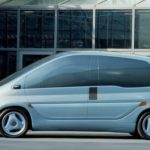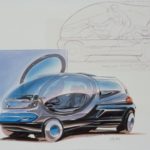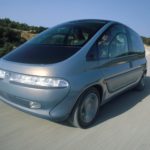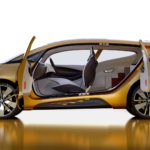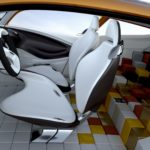Archives for :
Design
Chief Designer, Tadao Mori, and Chief Engineer, Koji Sato, explain how the Japanese traditions of fine quality finishing give the new LC coupe an added dimension of luxury and attention to detail.
Q: Where can we see the work of Lexus’ Takumi craftspeople in the new LC?
Q: How have you been able to make use of the craftsmanship skills that were developed for the LFA?
Running from May 3 to September 18, the Audi ‘museum mobile’ is presenting 12 coupés from the 1930s to the present day, in an exhibition titled “Dynamic Sculpture – the Tradition of Sportiness and Elegance at Audi.â€
- Highlight: A replica of the “Manuelaâ€, a Horch 853 Coupé. In 1937, Auto Union had this luxury car made for Bernd Rosemeyer, its most famous racing car driver.
- The first Audi Coupé of the post-war era: The Audi 100 Coupé S had its market launch in 1970.
- Coupés seemed to have been created solely for long-distance races – like the DKW Monza from 1956 at the Mille Miglia in Italy.
When vehicles with the coupé body type first appeared on the scene, they were often known as “Les Désobligeantes†(the unobliging ones). The style takes its name from the idea to “cut†(“couper/coupé†in French) a four-seater coach body to create a two-seater. The result was a body type that aroused the interest of the elite set. And in the years that followed, the high-quality interior equipment and trim installed in coupes made them the favorite vehicles among the high society of major European cities.
With the initial attempts at streamlined design in the 1930s, the roof form sloping downward to the rear began to catch on. The criteria by which we define a coupé today emerged only gradually, however: a short, flattened roof resting on two posts, with a two-seat interior. The coupes really hit their stride in the 1950s and 1960s. A key factor behind this popularity was the long-distance races of the period, like the Mille Miglia, the Targa Florio, the Liège-Rome-Liège race and the “2000 km durch Deutschland†(2,000 kilometers though Germany), which almost seemed to have been conceived specifically for coupes. Typical of coupe design was the combination of a great looking exterior and the best technology. Still today, the coupe is seen as the jewel in the product lineup of every automaker.
At the show will be 12 coupés from Audi history. A particular highlight is a replica of the “Manuela,†a unique coupé version of the Horch 853. The car was specially built for Bernd Rosemeyer in 1937. The most successful and most popular Grand Prix driver for Auto Union back then, Rosemeyer loved this luxury automobile – a passion clearly captured in countless photographs. This and the fact that the motorsport star was killed while attempting a world record run just a few months after he got the car, exalted the Horch “Manuela†to its legendary status. It is believed the original coupe disappeared without a trace during World War II.
Other treasures from the annals of company history trace the body type through the 1950s: a rare DKW Meisterklasse Coupé with a body by the specialist company Hebmüller, a DKW Monza (1956), the Auto Union 1000 Sp (1958) and an NSU Sport Prinz (1959). Also included in the exhibition is the first Audi coupe of the post-war era, the Audi 100 Coupé S from 1970. Representing the historic return of the four rings to the premium segment are the Audi Coupé GT (1980), the Audi quattro (1981), the Audi Sport quattro (1983) and the Audi Coupé from 1988. Visitors will also have the opportunity to see the first edition of the style icon Audi TT from its debut year 1998. And finally, the path to the present culminates with the Audi A5 from 2007.
Ed Welburn, vice president of General Motors Global Design will retire on July 1, following a 44-year career with the company.
- Ed Welburn, vice president of General Motors Global Design will retire on July 1, following a 44-year career with the company.
- Michael Simcoe, a 33-year veteran of GM Design and vice president of GM International Design, will succeed Welburn
Michael Simcoe, a 33-year veteran of GM Design and vice president of GM International Design, based in Australia and Korea, has been selected to succeed Welburn. He will be the company’s seventh design leader and begins transitioning into his new role on May 1. His replacement has not been named.
Welburn, 65, has been celebrated inside and outside the industry for his extraordinary achievements. He has led GM Design since 2003, and globally since 2005, the first African American from any automaker to do so.
“GM Design is among the most respected and sought-after organizations in the industry because of Ed’s leadership. He nurtured a creative, inclusive and customer-focused culture among our designers that has strengthened our global brands,†said Mary Barra, GM chairman and CEO.
Under Welburn’s leadership, GM built a network of 10 GM design centers in seven countries. His team of more than 2,500 creative men and women – based in the U.S., Germany, South Korea, China, Australia, Brazil and India – collaborate on the design development of every GM concept and production car, truck and crossover globally.
Mark Reuss, executive vice president, Global Product Development and Global Purchasing and Supply Chain, announced Simcoe’s promotion and commended Welburn.
“Given his deep global experience and passion for breakthrough design, Michael is the right person to lead GM Global Design,†said Reuss. “He is known for his ability to take diverse ideas and mold them into great products that surprise and delight our customers.â€
Reuss recognized Welburn for his creative imprint on four decades of iconic vehicles and his leadership in identifying and developing world-class talent.
“Ed’s team turns out one award-winning product after another … and his strong bench will keep GM Design on top for years to come,†Reuss said.
Simcoe has been in his current role since 2014, overseeing GM’s production and advanced studios in Korea, Australia and India. He is known for applying global design excellence and creativity to the company’s distinct brands.
He joined GM in 1983 as a designer at Holden in Australia, and is Holden’s brand champion. In 1995, he became director of Design for GM Asia Pacific and in 2003, was named executive director of Asia Pacific Design and led the development of the new GM Korea design operations under Welburn’s leadership.
The following year, he became executive director of North American Exterior Design, responsible for critical and commercial successes like the GMC Terrain, Buick LaCrosse, Chevrolet Camaro and Equinox and Cadillac CTS.
More recently, he led the team responsible for the award-winning Buick Avenir Concept. Last month, he introduced the Chevrolet Colorado Xtreme and Trailblazer Premier show cars at the Bangkok International Motor Show.
More information on the achievements of Wellburn during his tenure at GM can be found at WelburnDesign.com
How does Aston Martin create an iconic car? What is beauty, and is a mechanical structure like an automobile beautiful? What is the future relevance of an independent luxury sports car brand, and how will it evolve? These and many other questions will be discussed at this exclusive and unique event. – See more at: http://designmuseum.org/is-beauty-the-engine-of-design#sthash.VyTUlMkt.dpuf
The Easter Jeep Safari is an event consisting of day-long trail rides, departing from Moab, Utah, throughout the nine-day-long event. The Jeep Safari was started in 1967 by the Moab Chamber of Commerce as a one-day trail ride. Over the years, as participation grew, the Safari expanded until it finally reached the current nine-day event. “Big Saturday†still remains the culmination of the event on the Saturday of Easter weekend. This year Jeep bring several in-house projects to the event to push the brand and show off their after-market range.
Seven new, ultra-capable Jeep® concept vehicles – featuring an array of Mopar and Jeep Performance Parts available to consumers – will conquer the famous and challenging trails of Moab, Utah, at Easter Jeep Safari, March 19-27. Thousands of off-road enthusiasts are expected to descend upon Moab this year to celebrate what will likely be the most popular Jeep Safari ever, as the 50th annual event coincides with the 75th anniversary of the Jeep brand.
“Every year the Jeep team looks forward to pushing the limits with new, exciting and capable concept vehicles for our most loyal enthusiasts at the Easter Jeep Safari in Moab, where we receive a tremendous amount of valuable feedback,†said Mike Manley, Head of Jeep Brand – FCA Global. “This year is extra special, as together with our biggest fans, we celebrate Jeep’s 75th anniversary – as well as the 50th running of the Jeep Safari. We’re delighted to share seven of the most capable and eye-catching concept Jeep vehicles we’ve ever created at this year’s historic event.â€
The 2016 crop of Easter Jeep Safari concept vehicles utilises both production and prototype Jeep Performance Parts. The Mopar brand is responsible for developing, building and ensuring that all Jeep Performance Parts meet rigorous specifications and with 4×4 capabilities in mind, allowing Jeep owners to further enhance their stock vehicle.
“These seven vehicles have been modified with Mopar and Jeep Performance Parts to take on the toughest trails, to go beyond where the road ends,†said Pietro Gorlier, Head of Parts and Service (Mopar), FCA – Global. “Mopar’s mission is to provide all FCA US vehicle owners with unique performance parts and accessories to tailor vehicles to their individual lifestyles. Nothing supports that more than demonstrating how we can equip Jeep owners to take on some of the more extreme trails in the world.â€
The seven new Jeep concept vehicles built for Moab this year were created by a team of dedicated, passionate engineers, designers and fabricators that have been customizing production vehicles since 2002, and have introduced more than 50 concept vehicles for the enthusiasts who attend the popular Easter Jeep Safari.
The 2016 Easter Jeep Safari concept vehicles include:
Jeep Crew Chief 715
The Jeep Crew Chief 715 concept vehicle was built as a salute to legendary Jeep military service vehicles, in particular the Kaiser M715. This open-air Wrangler Unlimited-based concept vehicle showcases a burly design with heritage styling cues. The Crew Chief 715 utilizes modern-day construction with a rear seat and extra doors for additional passenger capacity while staying close to its classic military roots.
Original Jeep military service vehicles were legendary for getting troops through rugged terrain, and the Jeep Crew Chief 715 illustrates this legacy. Steel front and rear bumpers, 20-inch beadlock wheels, and 40-inch NDT military tires pay homage to the original Jeep military vehicles. The Crew Chief 715 utilizes an on-board air system with a hard-mounted quick-disconnect fitting for airing up or lending assistance to other vehicles on the trail. Other features include a master cylinder brake upgrade, cold air intake and a modified exhaust.
Exterior features such as Jeep Performance Parts off-road rock rails, a winch mounted into the front and rear bumpers, Dana 60 front and rear axles and a 4-inch lift kit with Jeep Performance Parts/Fox 2.0 Remote Reservoir shocks give the Crew Chief 715 increased capability. The “Tactical Green†color scheme runs from the custom modified M715-inspired front-end to the tailgate. The Crew Chief 715 features a military themed 5-foot cargo bed.
Inside, the no-nonsense interior features leather bucket seats with canvas inserts, aircraft-inspired control switches and Mopar all-weather mats. The media center features a centrally located navigational compass.
The Jeep Crew Chief 715 is powered by the 3.6-liter Pentastar V-6 engine and is mated to a five-speed automatic transmission.
Jeep Shortcut
A carefully crafted take on the beloved Jeep CJ-5, this Wrangler-based concept vehicle invokes the spirit of 1950s Americana with a shortened body and functional simplicity.
Exterior styling cues include a unique grille, hood, tailgate, front and rear wheel flares and custom chrome front and rear bumpers. A modified exhaust, 17-inch red steel wheels and 35-inch BF-Goodrich Mud-Terrain T/A KM2 tires help the Jeep Shortcut maintain the look of an icon.
Jeep Performance Parts featured on the Shortcut include a front and rear Dana 44 axle and a 2-inch lift with Fox shocks. Overall body length has been reduced by more than 12 inches to keep the Shortcut concept vehicle light and maneuverable on the trails.
Inside, the simple yet functional interior features low-back leather bucket seats with plaid inserts, a red ball shifter handle, four-point safety cage and Mopar all-weather mats.
The Jeep Shortcut is powered by the 3.6-liter Pentastar V-6 engine and mated to a 5-speed automatic transmission.
Jeep Renegade Commander
The Jeep Renegade Commander concept vehicle is equipped with an assortment of Mopar and Jeep Performance Parts for the ultimate off-road adventure. A 2-inch lift kit and 17-inch Rubicon aluminum wheels with 29.5-inch BF-Goodrich All-Terrain T/A KO2 tires increase the off-road capabilities of the Jeep Renegade Commander.
The “Fluorescent Gray†exterior features Renegade’s MySky open-air roof with removable panels, custom body decal, Mopar off-road rock rails, skid plates and a modified exhaust. Also featured are the Mopar brand’s trailer hitch receiver and front and rear auxiliary lights.
Inside, the Renegade Commander includes Katzkin seat covers, body color bezel accents, a pedal kit, Mopar off-road kit and Mopar all-weather floor mats.
The Jeep Renegade Commander is powered by the 2.4-liter Tigershark engine with MultiAir2 mated to a 9-speed automatic transmission with Jeep Active Drive Low.
Jeep Comanche
Based on the Jeep Renegade, the Jeep Comanche concept vehicle is designed to be off-road ready with practical utility. A nod to Jeep pickup trucks of years past, the Comanche concept takes styling cues from military and civilian Jeep heritage.
The Comanche’s “Beige Against the Machine†concept exterior paint is accented with a Satin Black hood, a concept lower front fascia, winch, steel rear bumper, soft top, and spare tire in the bed. The wheelbase has been stretched an additional six inches versus a production Renegade to accommodate Comanche’s 5-foot bed.
Inside, the Comanche features custom seat covers, pedal covers, door sill guards, and Mopar all-weather mats. Jeep Performance Parts like off-road rock rails, a 2-inch lift kit and a winch bolster the Comanche’s off-road capability. The Comanche rolls on 16-inch painted wheels and 32-inch BF-Goodrich All Terrain T/A tires.
The Jeep Comanche is powered by a 2.0-liter diesel I-4 engine and mated to a 9-speed automatic transmission with Jeep Active Drive Lock, which includes low range and a locking rear differential.
Jeep FC 150
A true American workhorse, this 1960 Jeep FC 150 concept vehicle is rich with heritage and built to tackle both challenging rocky trails and the harshness of a western cattle ranch. Originally built from 1956 to 1965, the FC 150 is based on the CJ-5 and offered a clever packaging solution by keeping overall length to a minimum for maneuverability, but maintained a full-length cargo box for utility.
This heritage Jeep vehicle continues to utilize its original steel body that proudly bears battle scars while components underneath have been revamped. The FC 150’s off-road prowess has been enhanced courtesy of a 2005 Jeep Wrangler chassis modified to accept a Dana 44 front axle, Dana 60 rear axle and 17-inch white steel wheels wrapped in 33-inch BF-Goodrich Mud-Terrain T/A KM2 tires.
Inside, the FC 150 features vinyl seat covers, a custom headliner wrapped in a vintage duck hunting pattern, CB radio, analog compass and Mopar all-weather mats.
The Jeep FC 150 heritage vehicle is powered by a 4.0-liter PowerTech I-6 and is mated to a 3-speed automatic transmission.
Jeep Trailcat
The Jeep Trailcat concept vehicle is the ultimate off-road machine, equally at home on Moab’s rugged trails or a high-speed section. Utilizing the supercharged 6.2-liter HEMI® Hellcat V-8 engine, and mated to a 6-speed manual transmission with a custom shifter ball featuring an embossed Hellcat logo, the Trailcat concept vehicle leaves everything else in a cloud of dust.
To get the 707-horsepower Hellcat engine into the Trailcat, designers stretched the wheelbase an additional 12 inches while chopping the windshield two inches for a sleeker look. Mopar exterior enhancements include a power dome vented hood, Satin Black grille, LED headlamp and fog lamps and rock rails.
The robust off-road look is further aided by steel front and rear bumpers, 17-inch beadlock wheels and 39.5-inch BF-Goodrich Krawler T/A KX tires, front and rear Dana 60 axles and Fox shocks.
Subtle design cues, such as a Hellcat decal on the front quarter panels and a “Trailcat†decal on the side of the hood, hint at the horsepower that lurks beneath, making this much more than a typical production Wrangler. The Trailcat’s interior is simple yet functional and features sport bucket seats from the Dodge Viper, made from carbon fiber and featuring Katzkin leather seat covers with accent stitching.
Jeep Trailstorm
The Trailstorm concept vehicle is the ultimate Jeep Wrangler for exploring off the beaten path. Offering room for extra gear and fuel tanks, it is based on the Jeep Wrangler Unlimited, and delivers elevated capability to conquer trails with ease.
Off-road capabilities are enhanced with several Jeep Performance Parts, including 17-inch concept off-road wheels wrapped in 37-inch tires, a 2-inch lift kit with Jeep Performance Parts/Fox shocks, a Jeep Performance Parts Rubicon winch, and Dana 44 front and rear axles. Half doors offer a clear view of obstacles ahead and a bedlined interior makes cleaning up after a day on the trails easy.
Mopar exterior enhancements include a winch guard, Satin Black grille, LED headlights and fog lights, high top fenders, power-dome vented hood, Mopar off-road rock rails with a step, Big Brake Kit, a concept fast-back soft top, tail light guards and a Mopar fuel filler door. Finishing the Trailstorm’s exterior upgrades are a steel front and rear Rubicon bumper and a Jeep Performance Parts tire carrier. The Trailstorm is wrapped in camouflage allowing it to blend into its surroundings in the Utah desert.
The Trailstorm’s bedlined interior also features Katzkin seat covers and Mopar all-weather floor mats. The Jeep Trailstorm is powered by a 3.6-liter Pentastar V-6 engine and is mated to a 5-speed automatic transmission.
IED and Quattroruote in Geneva present the latest concept car by the Master in Transportation Design, a self-driving vehicle that focuses on the user experience. After an initial collaboration started in 2015, the two organisations have partnered again on the occasion of their anniversaries: in 2016 they celebrate 50 years since the first IED creative graduate and 60 years from the first issue of the magazine that would become an international leader in the automotive world.
Shiwa (4,700mm long, 2,000mm wide, 1,500 high and with a 3,660mm wheelbase) is a noiseless zero emissions self-driving vehicle with four seats and four electric motors integrated in the drivetrain. Shiwa – a Japanese word meaning “fold†– indicates the form/action able to transform a surface without resistance into a self-supporting object, as in origami: the fold gives form and function to a surface which otherwise would lack them. This is the initial concept from which the Korean student Youngjin SHIM drafted her project, which was then developed by a team composed of her and eleven other Master students, including the Italian Luca MENICACCI and the Indian Jaykishan Vithalbhai LAKHANI. The external structure of the concept is inspired by the fold/origami idea.
The concept car highlights a new idea of an object strong through its form, redefining the idea of chassis and of external structure, which in this case encloses the cabin shaped like a suspended “diamondâ€. The exterior origami protecting the diamond-cabin is made of metal composite material with an aluminium finish and is connected to a frame. The Shiwa cabin interior surfaces are designed to project multimedia contents towards the passengers, outdoors or to create an augmented reality. The cabin is designed to bring people together, thanks to the seats configuration disrupting the traditional passenger-driver hierarchy and delineating different spaces and uses and reinterpreting the concept of conversation and interaction inside the vehicle. Shiwa envelops the passengers both physically, in their sensory dimension and in all the relational aspects among themselves and with the outside world.
The vechicle uses an all wheel drive system with 4 brushless motors mounted directly on the wheels, a totally electric power unit. Shiwa is an IICV – Individual Identity Companion Vehicle: it learns the identity, interests and habits of its occupants, it recognises their features and adapts its behaviour to circumstances and to passengers. Among its features is a fingerprint keyless entry system. Shiwa also features full-LED headlights and a front OLED display indicating the charging level of the car and allowing the opening and the insertion of the charging plug-in.
“The automotive world is on the verge of a paradigm shift that will revolutionise processes and archetypes – says Gian Luca Pellegrini, director of Quattroruote. Shiwa wants to be a starting point on the road towards a future in which the role of manufacturers and motorists will undergo an ultimate transformation: a world where the self-driving vehicles will introduce a new way of intending private transport as well as a different interpretation of designâ€.
“Shiwa is a self-driving vehicle but talking about it today means facing obstacles that are more psychological and organizational than technological – declares Riccardo Balbo, Director of IED Turin. With Shiwa, IED and Quattroruote raise their eyes towards the horizon on a temporal space of the city spanning over the next 15 years. Shiwa proposes scenarios and solutions that automotive brands are starting to face today in order to address the industrial market of urban mobility towards 2030, in a world very different and certainly not predictable today, but where the comparison between mobility, habitat and society will require more radical answers. The concept car subverts the established approach of the automotive world: it is designed starting from the user experience and from the inside, imagining a micro-habitat for the individual. A space where the experience, time, information and quality of life become central and prevail over the exterior design, becoming direct expression of the internal designâ€.
The project is the result of a creative process involving students in a process replicating that of a contemporary automotive design centre. All Master students submitted an individual proposal; the projects better suited to answer the brief for the interior or exterior area were selected and combined for designing the final version. The class then created a core work team which completed the final full-scale concept design. The show car was constructed by Cecomp, for over 30 years the European leader in the production of models and prototypes, which has always cooperated with the Institute in the prototyping process. The SHIWA project was also supported by various technical partners including Newcast Services, Model Resine, OZ Racing and Pirelli.
About the Project & Course
Initial Brief
THE AUTONOMOUS DRIVING VEHICLE: NEW ENGINEERS COMPONENTS IN TRADITIONAL SOLUTIONS OR DESIGN SOLUTIONS FOR A MOBILITY FUTURE?
Design an autonomous car or vehicle. Imagine how many opportunities designers can bring in terms of concepts, solutions, philosophy and perception open in such a scenario, where lots of rules are changed or up to: interior layouts can drastically affect the main body concepts, technology can define different uses, fashion, even the inner sense of property of a vehicle. The challenge designers should tackle is jump a step ahead and imagine an autonomous car starting from design rather than technology.
Students on the two year course come from different design backgrounds. Admission to the course is restricted to professionals with at least two years work experience in the sector or graduates from IED or colleges in a similar field as well as other design graduates.
Credits
Shiwa is the brainchild of: Youngjin SHIM (Korea); Luca MENICACCI (Italy) and Jaykishan Vithalbhai LAKHANI (India)
Interior Design development: Jose Ignacio MARTINEZ FLORES (Ecuador)
Project contributors: Chen LUJIA (China); Charles Frederic Nestor CARRUPT (Switzerland); Mikhail D. SOUZA (India); Qichang LI (China); Kejin PAN (China); Alparslan TURHAN (Turkey); Gaurav UDAVANT (India) and Honghu ZHANG (China), students of the Master in Transportation Design IED Turin AY 2014/15.
Shiwa was realized under the coordination of Alessandro Cipolli, Master in Transportation Design Coordinator and Davide Tealdi, IED teacher. The project was carried out under the supervision of Fulvio Fantolino, Coordination of Transportation Design.
The Mirrow Provocator – a car designed with the same wheelbase as the Smart ForTwo but considerably wider, allowing a different passenger experience. The designers envisage the body being produced from more than 50% recycled polymer. The car is in early stages with the creators looking for interest and co-operation. For more information, visit www.mirrowcars.com.
Inside the Mirrow Provocator feels like a minivan, but the driver’s position behind the wheel and the front passenger’s position are close to the Mercedes E-class… The combination of high standards of comfort and safety with the short length of the car would be achieved by using the principals of aircraft space planning with seats located on both sides of the aisle with increased height of ceiling in the centre,and access through the one ordinary size door.
The Renault Scénic, which was the European car industry’s first compact MPV, is celebrating its 20th anniversary in 2016. We take a quick look at some of the concepts and design iterations of the Scénic.
Until the 30th June 2016, the Design Museum London is hosting it’s Cycle Revolution exhibition.
“As an assembly of bicycle porn the Design Museum’s new Cycle Revolution is absolutely filthy. †The Times
Highlights of the bikes on display include:
- Sir Bradley Wiggins’s 2015 Hour Record bike and 2014 World Championship Time Trial bike
- A number of Team Sky’s Pinarellos from the 2015 Tour de France, as well as kit and equipment from the team’s 2015 Tour de France win
- Sir Chris Hoy’s Great Britain Cycling Team London 2012 Olympic Track bike
- The Lotus Type 108 ridden by Chris Boardman at the 1992 Barcelona Olympic Games
- Eddy Merckx’s 1972 Hour Record bike
- Francesco Moser’s 1984 Hour Record bike, loaned for the exhibition from the personal collection of Sir Bradley Wiggins
- The earliest prototype Brompton in existence
- A 1978 Breezer Series 1
- A 1969 Raleigh Chopper.
- Bike builder’s workshop – showing the tools, materials and skills that combine to create a bespoke machine. Six independent British bike builders are profiled – Donhou Bicycles, Toad Custom Cycles, Hartley Cycles, Robin Mather Cycles, Mercian Cycles and Shand Cycles.
- High profile cyclists including Lord Norman Foster and Sir Paul Smith discuss their passion for cycling and hopes for its future in the closing film.
Full info on the Design Museum website.
This year the Design Museum opens the doors to its new home in Kensington. The Designers in Residence of 2016 will join the museum on this journey. Through a focused and rigorous proposal, the museum asks for designers to submit creative responses to this year’s theme OPEN.
Design is no longer exclusive but a process in which many voices can participate. The spirit of open design offers new and exciting ways to shape and experience the world around us. Design has become more inclusive. Tools that were once the preserve of professionals are now available to amateurs. Through hacking, co-creation, downloadable designs, and sharing of knowledge, more people than ever can take on the role of the designer.


